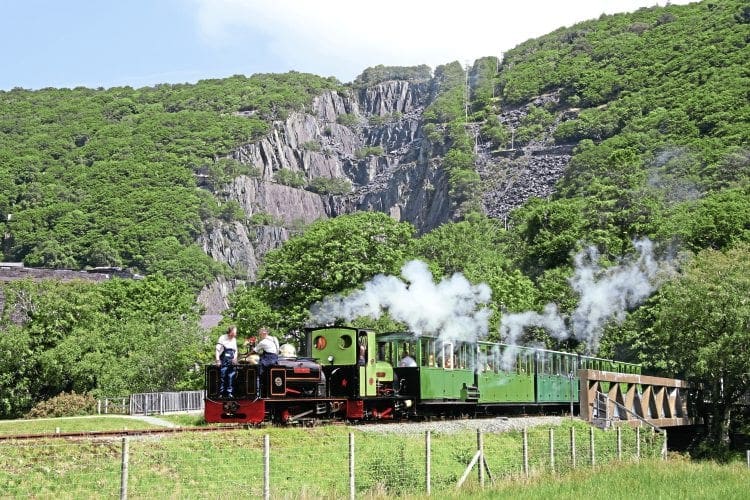Sitting in the shadow of Snowdon in North Wales, Cliff Thomas tells the story of Llanberis Lake Railway, whose foundations stem from a former slate quarry line.
A CHECK list of ingredients for a successful heritage railway might include: mountain landscapes (Snowdon, obviously!); running beside a lake; steam locomotives with local provenance; riding on an historic trackbed amid industrial archaeology; a long-established tourist location; and numerous supplementary attractions would score right up there.
The Llanberis Lake Railway ticks all those boxes – and with passenger numbers approaching the three million mark since opening in 1971 the formula plainly works.

These are big numbers for a small 1ft 11½ in-gauge railway. The one million passenger mark was passed during 1992/93 and the line sailed past two million in summer 1997.
Monthly Subscription: Enjoy more Railway Magazine reading each month with free delivery to you door, and access to over 100 years in the archive, all for just £5.35 per month.
Click here to subscribe & save
Average annual traffic for the first 26 years of operation ran at 78,000, with a fall between 1997-2016 when the average reduced to just over 62,200 a year. However, in 2016 the railway was back to its historic figures, carrying 78,634 passengers – the highest annual total since 2008. The three million landmark is inexorably approaching!
Railway village
Llanberis has attracted tourists since Victorian times, inevitably leading to proposals to build a railway from the village to the top of the highest peak in Wales (and England) following arrival of the standard gauge branch from Caernarfon in 1869.
The rack-and-pinion mountain line was finally built between 1894 and 1896, the popularity of the village and Snowdon Mountain Railway continuing long after closure in 1964 of the London & North Western Railway branch to Llanberis; passenger services had ceased in 1932.
Contrasting with the tourist magnet village and its mountain railway on the southern shore of Llyn Padarn, the north shore of both this lake and Llyn Peris presented a scene of major industrial activity in the form of Dinorwic slate quarry.
Most of the workings of this significant operation, which are in the form of open galleries carved into the mountainside of Elidir Fach and Elidir Fawr, and the resulting tips of waste material, remain a highly visible feature of the landscape.
The quarry employed an extensive railway system (technically 1ft 10¾ in-gauge, although wagons had double-flange wheels allowing ‘flexibility’ of gauge in the more lightly laid areas), worked by steam locomotives, the majority of which were Hunslet-built 0-4-0STs.
Varying in size and detail, these small locos (basically industrial plant in their original employment) and similar types from Penrhyn slate quarry and several smaller operations have become known under the affectionate generic ‘Quarry Hunslet’ tag in preservation.
The biggest issue for any North Wales slate quarry was transporting its production to market. Dinorwic finally solved this by building a railway from Gilfach Ddu (on the lake shore opposite Llanberis) to its own seaport on the Menai Straits, but not to the same gauge as the quarry network.
The Padarn Railway was a 4ft-gauge line with the narrower gauge slate wagons carried aboard transporter wagons to Penscoins at the coast above Y Felinheli, where the quarry wagons were offloaded and run down an incline into Port Dinorwic.
Read more in the December issue of The RM – on sale now!




